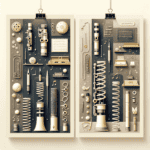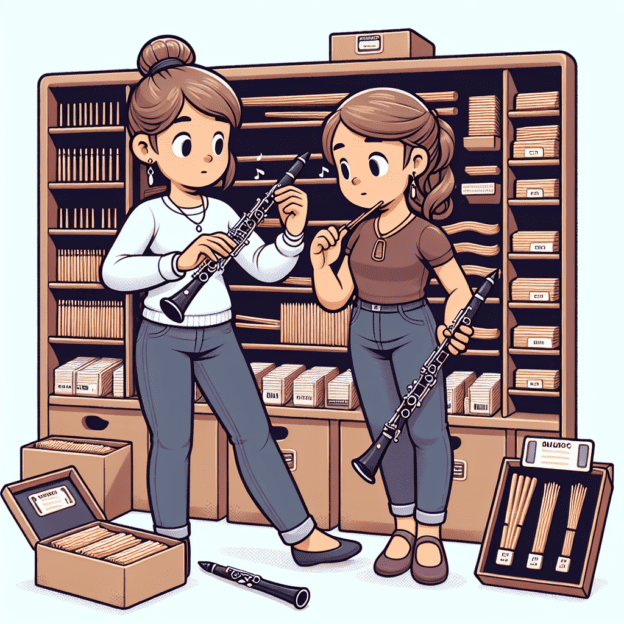Picking the right clarinet reed can feel like searching for a needle in a haystack, especially for beginners. Even experienced players sometimes struggle with this small but crucial piece of wood (or synthetic material). Don't worry, though – with a few helpful tips, you'll be able to find the perfect reed to produce those sweet, clear notes consistently.
Reeds are essential in shaping your sound. Finding the right match between your reed, clarinet, and mouthpiece is like putting together a puzzle – all the pieces need to fit well. If the reed is too soft, your sound might lack depth; if it's too hard, you might feel like you're fighting against it. Let's explore some practical advice to help you find what works best for you.
1. Understand Reed Strength
Reed strength is usually the first thing players consider. You'll see it marked on the box with numbers, typically ranging from 1 to 5. Lower numbers indicate softer reeds, while higher numbers mean harder reeds. Beginners often start with softer reeds (1-2) because they're easier to play, but these might not provide the depth and control you'll want as you improve. Harder reeds (around 3.5 and up) require more effort but can produce a richer tone. Many intermediate players find a sweet spot in the middle range.
Remember, reed strength isn't about how strong you are – it's about how much resistance the reed provides. New clarinet players typically start with softer reeds and gradually move to harder ones as they develop better breath control.
| Reed Strength | Characteristics | Suitable For |
|---|---|---|
| 1 – 2 | Easier to blow, less resistant | Beginners, players with less breath control |
| 2.5 – 3 | Balanced resistance, versatile | Intermediate players, versatile use |
| 3.5 – 5 | More resistant, richer tone | Advanced players, stronger breath control |
2. Know the Materials
Reeds are typically made from cane or synthetic materials. Cane reeds produce that warm, classic tone that many players prefer. They're often considered the traditional choice for clarinet sound. However, they can be a bit finicky – they swell in humid conditions, shrink in dry air, and eventually wear out.
Synthetic reeds, on the other hand, are more durable and less affected by environmental changes. While they might not offer the same tonal variety as cane reeds, recent advancements in reed technology have significantly improved their quality. Even some professional players who usually prefer cane have been trying synthetic options, finding them increasingly competitive.
3. Let Your Mouthpiece Guide You
Your mouthpiece and reed work together as a team. A good-quality mouthpiece, like those found on Martin Freres instruments, can help you get the most out of your reed. Some mouthpiece designs work better with softer reeds, while others perform best with harder ones. It's like finding the perfect pair of shoes – everything needs to fit just right to perform at its best.
If you're trying different reeds but can't seem to achieve a balanced sound, consider how your mouthpiece might be affecting things. Visit a music store to try various combinations, and remember that your equipment choices can always be adjusted as you progress.
4. Break-In Your Reeds Gently
New reeds are like new jeans – they need some time to break in. For the first week, use a new reed for just a few minutes each day instead of playing for hours right away. This approach reduces the risk of cracking or warping the reed too quickly. Over time, you'll notice the reed adjusting to your playing style, similar to how new shoes conform to your feet.
It's a good idea to rotate between several reeds. This might seem fussy, but using multiple reeds in rotation prevents any single one from wearing out too quickly. Plus, you'll always have backup options ready when your favorite reed decides to act up.
5. Caring for Your Reeds
Reeds need proper care to perform well. Store them in a case that allows air circulation to prevent warping and mold growth. Keep them away from extremely dry or humid environments when possible. After playing, gently wipe your reed to remove moisture and store it in its protective case.
When a reed starts looking discolored, frayed at the edges, or consistently sounds dull, it's time for a replacement. Holding onto old reeds for too long can negatively affect your tone and make your practice sessions less enjoyable.
6. Experiment to Find Your Sweet Spot
Every clarinetist is unique. What works perfectly for one player might not suit another. Try various reed strengths and brands, paying attention to how they feel and how they affect your tone. Taking notes can be helpful – it's all about discovering what works best for you.
Many players appreciate Martin Freres reeds for their consistency and how well they work with their clarinets. However, trying different options is always beneficial to find what suits you best. The most important thing is to listen to your sound. If you're happy with what you hear, you're probably on the right track.
Remember, even professional players spend years fine-tuning their reed choices. Don't worry if you don't find the perfect reed immediately. Developing a good relationship with your reed takes time and experimentation, but the musical results are worth the effort!







